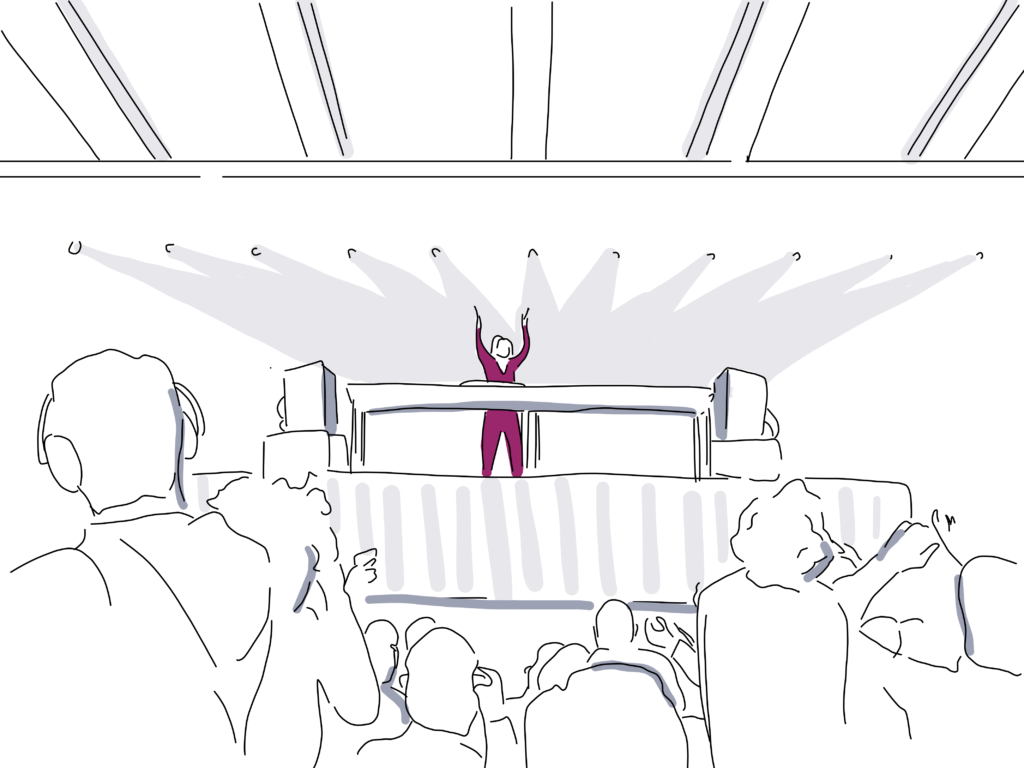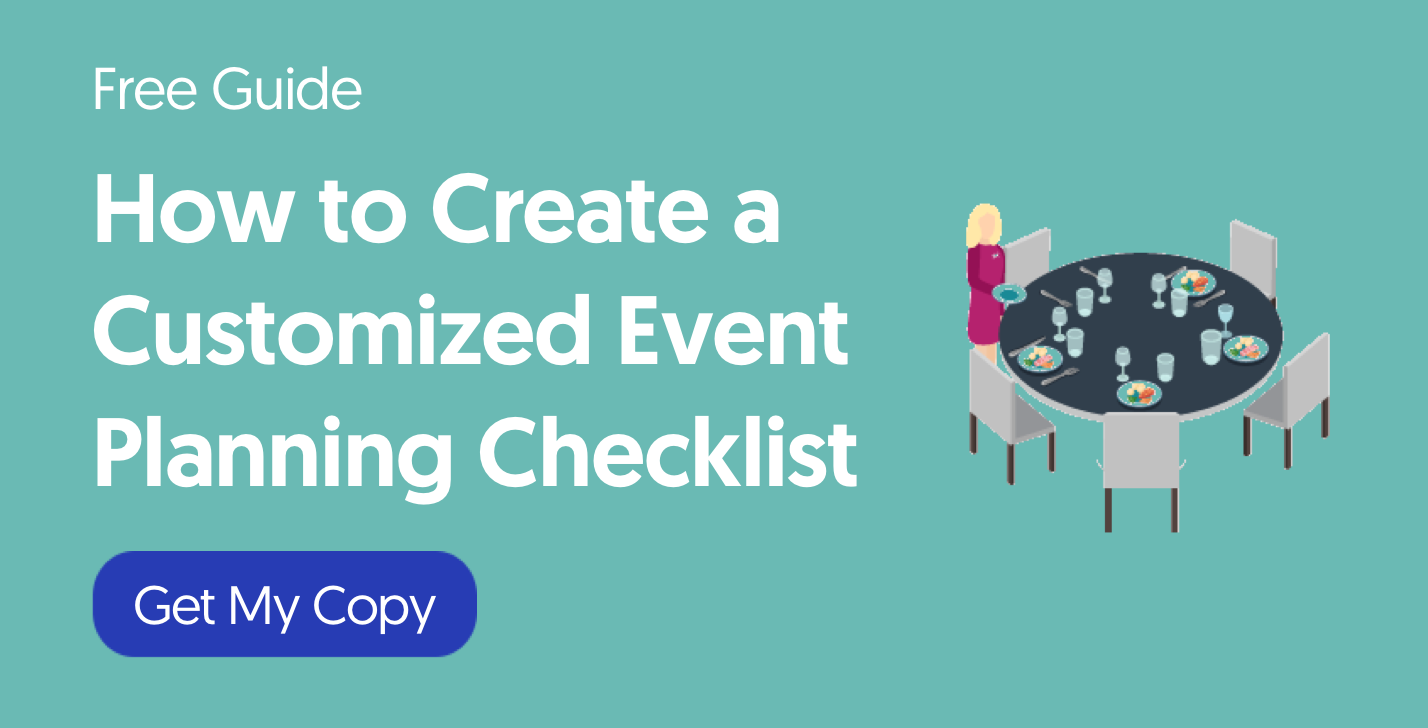
How to Plan the Best Festival
While these are uncertain times, music festivals have certainly emerged as big business in the last few years, with 32 million attendees annually in the United States alone. Festivals are a great event type for companies who want to gain exposure and provide an incredible experience for their target audiences.
Discover how to plan the best festival for your clients with this straightforward guide. And, explore creative ways to bring their vision to life, make your own music festival checklist, and learn more about important extras such as catering.
How to plan a festival in 11 simple steps
Follow this easy music festival checklist and suggestions for how to plan a festival that will impress your clients.
1. Create concrete goals and choose the right KPIs with your clients to plan the best festival possible.
Ask your clients these questions at your kickoff meeting to get a clear picture of their festival vision:
- What are the top three music festivals, past or present, most similar to your ideal event? What things do you love about those festivals and want to include in your own design? What things do you dislike about those festivals and want to stay away from?
- When your attendees leave the festival, what are the two main things you want them to say to friends about it the next day?
- Why is it important for you and your company to put on a music festival instead of a different event type? Why is it important to do it now instead of later in the future?
Afterward, nail down the best KPIs for their ticket sale and attendee experience goals. Start with one or more of these effective music festival KPIs:
- Choose social media engagement for your music festival KPI if your clients want to boost their digital clout and SEO.
- Go with ticket sales as your main KPI to help clients increase their short term yearly revenue.
- Select total active community members to be a major KPI to achieve your client’s goal of increasing long term client relationships.
2. Understand budget constraints.
Learn where to splurge or save your client’s existing budget without sacrificing event quality.
Opt for single-day events instead of entire festival weekends if it’s their first time. Book up-and-coming artists who have opened for the more expensive artists on your client’s dream list. Shave off marketing spend with strategic ad testing and online community building instead of print materials or brand ambassador tactics.
Invest in the perfect venue to enhance attendee experience and set up future versions of the event for success since most music festivals maintain the same location throughout their existence.
3. Make an event timeline for your festival.
Begin planning the event six or more months in advance. Secure big picture items such as festival goals, theme, and musicians three to six months out. Solidify details such as caterers, permits, and extra activities one to three months out. Leave important yet smaller, one-off tasks such as parking organization and festival map printing until one month out.
4. Obtain the right license and insurance.
Research city permit requirements as there may be more than one for your location. Ask your venue if they are zoned for entertainment, industrial, or retail as that will make a difference in your license selection. Always consult an attorney before your purchase event insurance. Plan to purchase insurance that covers weather-related incidents for outdoor music festivals and any possible onsite injuries for attendees, staff, or performers.
5. Identify your audience to plan the best festival for them.
Ask your clients for any documentation they have about their main target demographics and get their input as to who they picture will attend this event. Analyze your client’s existing social media following to create a target persona for your festival. Build your agenda around their biggest supporters to ensure high attendance within their existing network.

6. Craft a high impact event promotion and ticket sales plan.
Prioritize digital marketing over offline marketing – it’s more cost-effective, easier to measure, and leaves room for experimentation thanks to real-time feedback.
Then, tailor your outreach strategy to include online communities where they already hang out, such as a subReddit page for a band you’re going to pitch. Or a niche blog about a complementary passion your audience has. For example, check out how these band labels use Pokemon Go in their music marketing to reach Millennial concert-goers and foster community before, during, and after their shows.
Use tools such as Cvent Flex to make festival registration really simple. Or use Ticketstripe, Vendini, or Ticketfly to monitor where your leads come from, accept payments and upsell attendees on deluxe packages and VIP opportunities.
7. Find the perfect venue.
Research similar music festivals and related events that have happened in your area the past two years to see which venues they frequent. Chances are your target audience may already know and love the space, which can push them over the edge when they buy tickets since they’ll positively associate your event with others they’ve seen there. Check out available venues on the Cvent Supplier Network. And, use Kapow to source unconventional spaces such as rooftops and renovated churches.
Next, go on-site tours at your top two or three locations. Consider the cost, capacity, location, decor, layout, and available A/V equipment. Take lots of pictures for reference and ask the venue coordinator if they’re available to run you through how music festivals are typically done in this space. Use a tool such as Social Tables to plan your layout and compare floor plans side by side before you make your final selection. Also, consider parking options for staff and attendees plus load-in and load-out zones for each act.
8. Pitch festival sponsors.
Start with event sponsors your clients already have relationships with. Cold email brands your target audience already knows and loves with a pitch packet that includes concrete, high-value benefits they’ll receive if they partner with your music festival. Use popular incentives such as specific band sponsorships, kickback or VIP lounge space sponsorships, or merchandise booth space.
9. Hire vendors and event staff.
Find vendors who can help direct parking, set up and take down the venue, provide venue security, run check-in, and man first aid stations. Contract extra water station and bathroom providers if your venue has less than 1 per every 100 females or 1 for every 250 males, plus all-gender and accessible options too.
Partner with a catering company to mix drinks and serve food to guests throughout the festival. Opt for food trucks if you want to take advantage of famous local brands and have a nice picnic space to host it all in.
Book DJs for entertainment between acts and include laidback activities such as pop up shops or carnival games for when your audience needs a little break from the mainstage action.
10. Rent additional AV equipment.
Splurge on high-quality rentals if your venue doesn’t already provide equipment to impress attendees with a valuable concert experience. Consult with your rental company to see what equipment pieces they think you need for the venue and for each band. Ask the performers to provide a list of any additional equipment they need for the show – you may find that they are willing to bring most of their own gear and just need access to amplifiers on the day.
11. Plan your venue decor, lighting, signage, and weather protection.
Use your venue theme and style to handle most of the decor for you. Run lighting options by your bands to see what they have in mind for designs, then work with your venue lighting professional to do a run-through rehearsal with them ahead of time.
Place directional banners along the tops of entrances and exits to help direct traffic in multi-space venues. Add in sponsor logos to your stage backdrop and make sure to include your clients’ company names on any available tents, marquees, or billboards. Have backup tent rentals and an alternative layout plan for any weather-related issues.
12. Keep your event festival budget low
Eliminate offline marketing, use unconventional venues, and book a mix of smaller, complementary bands to surround your headliner with to save money on your music festival.
How much does it cost to put on a festival?
It costs $114.6 million to put on a festival as big and luxurious as Coachella, but festivals are doable on almost any budget provided you: 1. work with lesser-known but talented artists, 2. choose festival dates during your preferred venue’s slow season, and 3. offer premium upgrades that don’t cost you any extra but seriously up your profits, such as lounge access, specialty drink menus, and VIP parking.
Discover how to save money on a music festival
Save money on a music festival using these tips that ensure higher profits and happy attendees:
- Feature vendors as event sponsors in exchange for a lower rate.
- Consider weekday dates just after a holiday or immediately following a three-day weekend for cheaper venue deals.
- Partner with a new or local alcohol brand to save on beverage expenses.
Try these creative festival catering ideas
Creative festival catering ideas take something familiar and add a unique element or presentation to it in order to delight audiences. Check out these clever music festival catering ideas you can actually use:
- Choose finger foods, skewers, and appetizer bites with unexpected meats (such as Coachella’s shredded crab over seasoned french fries) over full meals to accommodate the normal hustle and bustle of a music festival.
- Offer food bars with affordable bases such as baked potatoes or greek yogurt to provide fun options for a fraction of the cost.
- Try pop-up food trucks hosted by local restaurants to infuse a sense of community and offer a completely unique experience to visitors and townies alike.
- Serve champagne, beer, and lemonade slushies instead of mixed drinks to save on your bartending budget.
- Create menu options with eye-popping palettes and Instagram appeal such as red burger buns or neon blue donut ice cream sandwiches dipped in rainbow cereal pieces.
Plan the best festival ever with the right event agenda and caterers
Now you know the step by step process for how to plan the best festival possible for your clients. Combine your newfound knowledge of festival budgets and creative catering ideas with some professional event agenda design tips, plus a foolproof guide to hiring an event caterer who will make your music festival the complete package.

